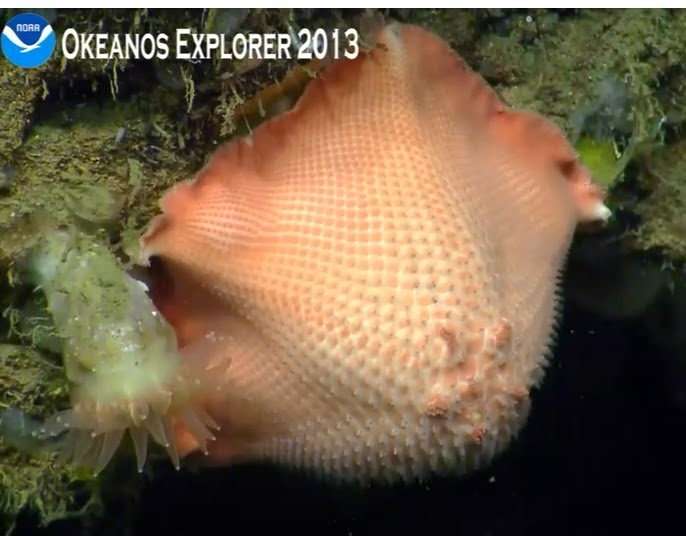February 7, 2018 report
Starfish on ocean floor found to have well developed eyes

A team of researchers from the University of Copenhagen and the Greenland Institute of Natural Resources has found that starfish living in the dark on the ocean floor have eyes on their arms that are similar to other starfish living near shore. In their paper published in Proceedings of the Royal Society B, the group describes their study of the unique sea creatures and what they learned about starfish vision.
Scientists have known for some time that some starfish that live near shore have compound eyes in the tips of their arms. In this new study, the researchers have found the same to be true for many types of starfish that live in the dark at the bottom of the ocean.
To learn more about starfish vision in places besides the shoreline, the researchers collected hundreds of specimens (representing 13 species) from depths ranging from shallow waters to 1,000 meters below the surface—all living in the North Atlantic near Greenland. They found that 12 of the species had compound eyes similar to those found in starfish near the shoreline—the one lone species without eyes was a burrowing starfish that lives relatively close to shore.
In all of those with compound eyes, the eyes were uncovered, the researchers report, and were located on the bottom side of the arm tip, which means the starfish bend the tips to use them, pointing the eyes at targets. Visual acuity and sensitivity to light varied among the species they studied.
The team also noted that two of the species were also bioluminescent, able to emit flashes of light. Because they have both vision and a means for producing light, the researchers suggest the bioluminescence could be a means of communication between members of the same species—perhaps as a signal warning of predators or as part of mating. They note more study is required to learn how the starfish actually use both their eyes and bioluminescence, but also point out the difficulty in doing so. Studying a sea creature on the ocean floor in the dark requires specialized equipment and perhaps a light source, which changes the environment, inhibiting the observation of natural behavior.
More information: Deep-sea starfish from the Arctic have well-developed eyes in the dark, Proceedings of the Royal Society B (2018). Published 7 February 2018.DOI: 10.1098/rspb.2017.2743 , rspb.royalsocietypublishing.or … nt/285/1872/20172743
Abstract
Asteroids, starfish, are important members of the macro-benthos in almost all marine environments including the deep sea. Starfish are in general assumed to be largely olfactory guided, but recent studies have shown that two tropical shallow water species rely on vision alone to find their habitat at short distances. Their compound eyes are found at the tip of each arm and they vary little between examined species. Still, nothing is known about vision in the species found in the aphotic zone of the deep sea or whether they even have eyes. Here, 13 species of starfish from Greenland waters, covering a depth range from shallow waters to the deep sea below 1000 m, were examined for the presence of eyes and optical and morphological examinations were used to estimate the quality of vision. Further, species found in the aphotic zone below 320 m were checked for bioluminescence. All species, except the infaunal Ctenodiscus crispatus, had eyes, and two were found to be bioluminescent. Interestingly, one of the species found in the aphotic zone, Novodinia americana, had close to the highest spatial resolution known for starfish eyes along with being bioluminescent. Accordingly, we hypothesize that this species communicates visually using bioluminescent flashes putatively for reproductive purposes. Other species have greatly enhanced sensitivity with few large ommatidia but at the sacrifice of spatial resolution. The discovery of eyes in deep-sea starfish with a huge variation in optical quality and sensitivity indicates that their visual ecology also differs greatly.
Journal information: Proceedings of the Royal Society B
© 2018 Phys.org


















